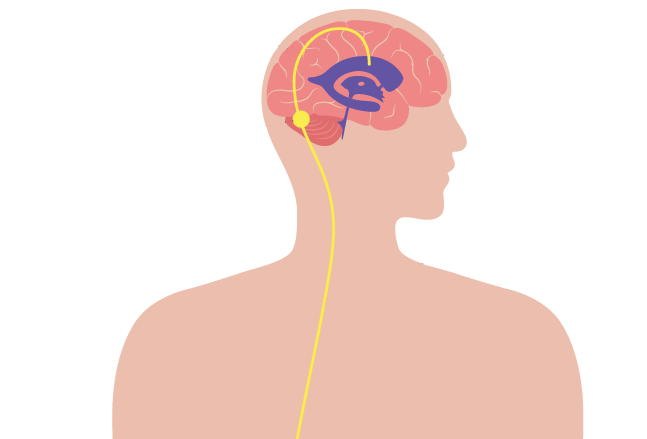
NNI sees around 150 to 200 new cases of normal pressure hydrocephalus (NPH) every year. Dr Nicole Keong, Consultant, Neurosurgery, NNI and Tan Bee Ling, Assistant Nurse Clinician - Advanced Practice Nurse share more about the condition.
Our brain and spinal cord are surrounded by a clear fluid called cerebrospinal fluid (CSF), which cushions them from injury while bringing nutrients to and removing waste products from the brain. CSF is constantly being produced by the brain and absorbed into the bloodstream.
In people with NPH, CSF circulation becomes disrupted, resulting in excessive amounts of CSF building up in the brain’s ventricles. Ventricles are hollow cavities located deep within the brain. Excess CSF in these fluid-filled cavities causes the ventricles to enlarge.
Correct diagnosis of NPH is essential to ensure appropriate management. However, it is difficult to diagnose NPH due to the way scans are currently taken to check for enlarging of the ventricles in the brain. A joint study by NNI and Singapore General Hospital (SGH) led by Dr Keong may have found a new method thatwill hopefully simplify and improve diagnosis.
Causes
The cause of hydrocephalus is usually unknown but could develop due to:
- Injury or trauma to the head or brain
- Infection
- Bleeding
- Tumour
Signs & symptoms
- Problems with thinking and memory
- Balancing and/or walking issues that can result in falls and head injuries
- Inability to control bladder
Not all symptoms are present at the same time. Sometimes, only one or two are present.
Treating NPH
NPH is an uncommon condition in the elderly, but symptoms may improve with shunt surgery. This involves inserting a permanent tube (shunt) into the enlarged ventricle to drain excess CSF. The shunt is placed under the skin and extends down the chest to the abdomen, where the excess fluid is absorbed. Patients, who will be on long-term monitoring after, can continue with their daily activities.

What to take note of with a shunt
- Inform your healthcare professional you have a programmable shunt inserted before any scheduled MRI scans.
- Do not place any magnetic devices near the shunt, e.g. lying on magnetic pillow.
- Do not perform neck massages or acupuncture on the side of the shunt insertion.
- Inform your healthcare professional of your shunt insertion before any abdominal surgery or abdominal procedures.
- Always bring the shunt wallet card with you, especially for all medical appointments, so that the information can be updated after every shunt setting.
Possible complications
- Decrease in attention
- Drowsiness
- Balancing problems
- Nausea and vomiting
- Headaches
- Giddiness
- Fever
- Redness, tenderness, pain or swelling of the skin along the shunt
- Vision impairments
If you experience a sudden worsening of these symptoms, proceed to the nearest Emergency Department. If the symptoms develop slowly over a few days to weeks, contact NNI’s Neuroscience Outpatient Clinic at 6330 6363, Monday to Friday, 8:00am to 5.30pm.
This article was published in the National Neuroscience Institute's NeusLink magazine, which covers articles about NNI updates and brain, spine, muscle and nerve conditions in English and Chinese - to read more articles click here!
Check out another related article:
Get the Health Buddy App
© 2025 SingHealth Group. All Rights Reserved.













 Get it on Google Play
Get it on Google Play